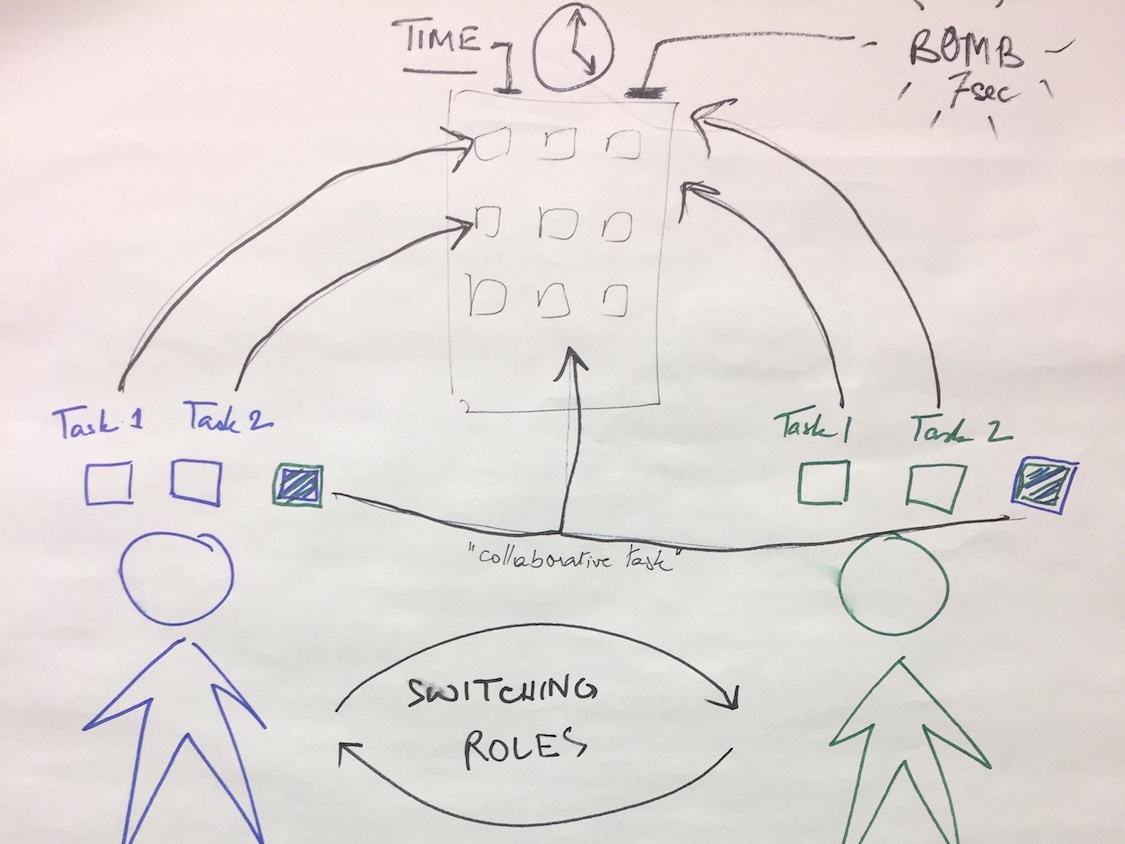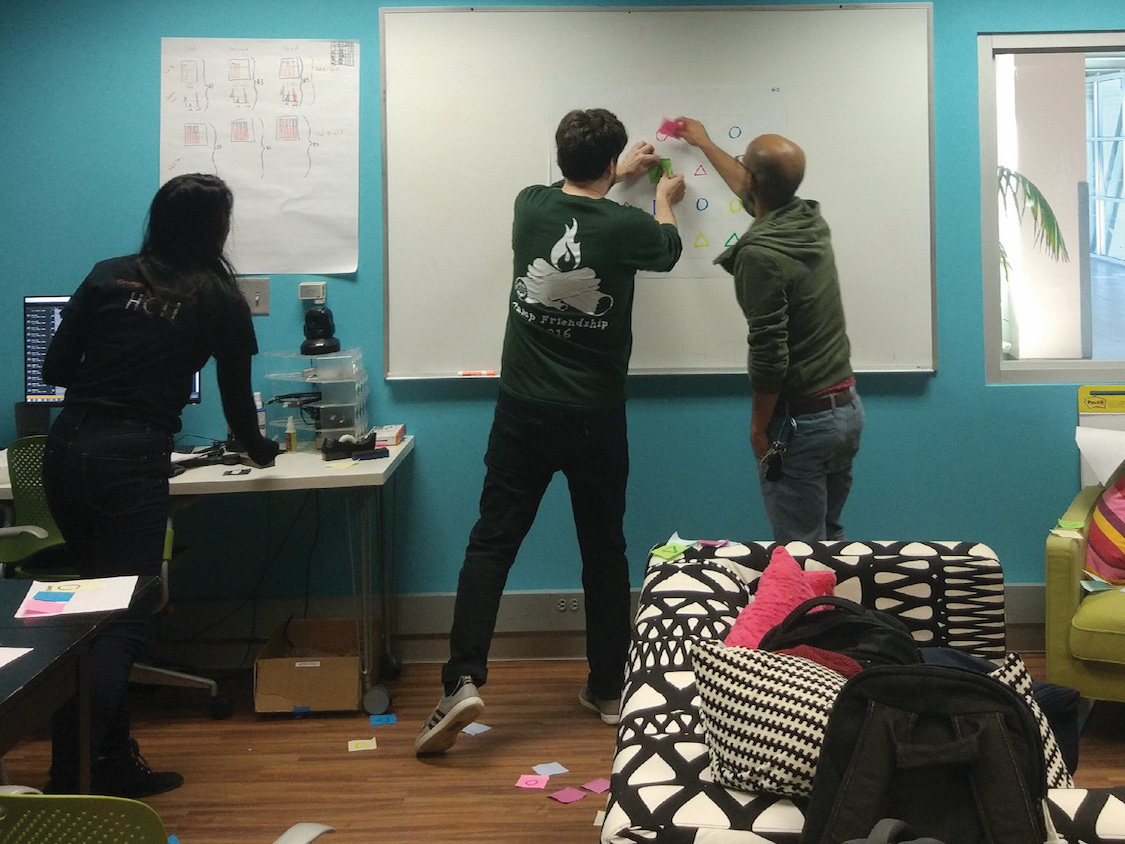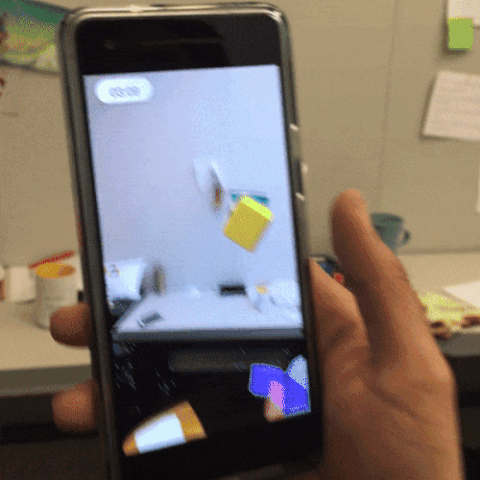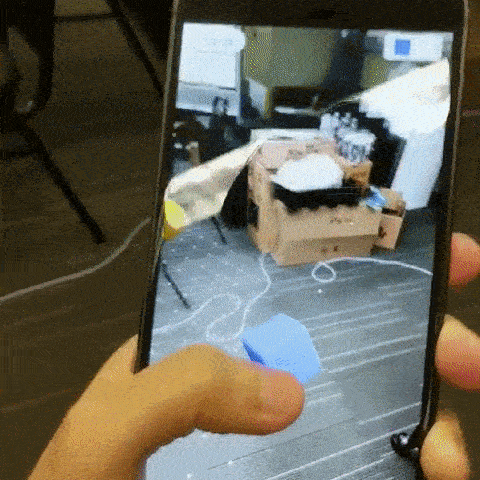Problem Statement
Smartphones get a bad rap, and rightly so. We are a society of noses glued to screens. We breathe in the spaces between push notifications. In the evenings, seated across from friends and family, we infinite scroll and half-listen. Do our mobile devices have to come in the way of being truly present? Might these devices actually enable the creation of meaningful shared experiences?
Outcome
Brick is a collaborative augmented-reality game. Brick’s players work together to fill in a pattern of Brick is a collaborative augmented-reality game. empty slots using digital "bricks" scattered about the room. The game has been found to improve interpersonal interactions between players by promoting laughter, communication, arousal, and collaboration. As it happens, the game is also pioneer in multiplayer augmented reality, and it was used to develop a set of best practices for designing shared-world AR experiences.
Selected Assets
A selection of assets from the prototyping process are presented here. For a detailed case study, see this page.

[Figure 1] A game diagram showing the actors, elements, and interactions in Brick.

[Figure 2] In progress, a playtest of a low-fidelity prototype of Brick.

[Figure 3] A diagram showing a single-player interaction in Brick.

[Figure 4] A diagram showing a multiplayer interaction in Brick.

[Figure 5] An animation showing a player picking up a brick during game play.

[Figure 6] An animation showing a player depositing a brick during game play.
[Figure 7] A short video showing the highlights from a session of gameplay.